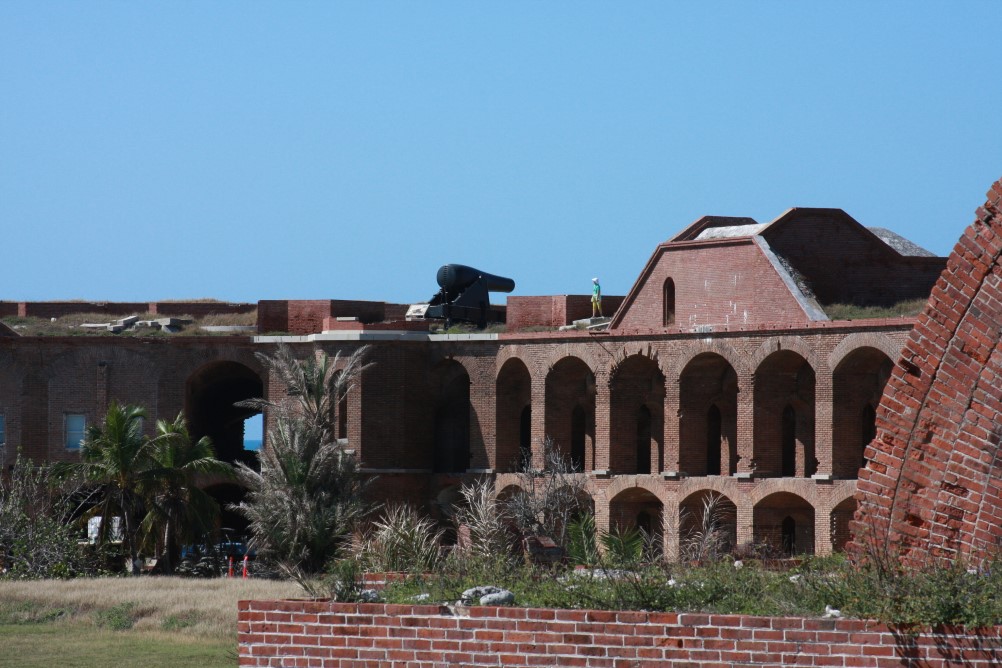February 1, 2023 @ 10:00 EST
Site Visit #69
In response to the coastal vulnerability exposed during the War of 1812, the United States began a project of building defensive fortifications along the coastline. One of these forts became the most powerful fort (in terms of firepower) to be built in the 19th century.
Where was this fort built? To protect Washington D.C., which the British burned in 1814? Maybe to protect a major coastal port like New York or Boston?
Nope. It was built on a small island in the Gulf of Mexico, 70 miles from the nearest town, which itself was on an island nearly 100 miles from the mainland.
That small island was Dry Tortugas, located 70 miles west of Key West, Florida. The fort was named Fort Jefferson and it was so huge that it was still under construction when the fort was abandoned in the late 19th century. Nonetheless, it had been functional for a few decades even if not complete.

Why build a fort here?
Let me first digress and mention how one gets to this park. You can use your own boat if you wish and are good at navigating open seas out of sight of land. Most people, however, use the ferry provided by an approved concessionaire of the National Park Service (note: it is not cheap, so be prepared if you check it out).
The concessionaire offers a free guided tour of the fort that takes around 1:15. Our tour guide went by the nickname “Hollywood”, and has been doing this tour for nine years. He was excellent and I highly recommend the tour especially if you are lucky enough to have him as your guide.
Back to why the fort was built out here. If you look at a map, you will see the Florida Keys – a series of small islands – extending south and west from the mainland. The entire chain is part of a reef with much of the reef underwater. This reef extends beyond Key West to Dry Tortugas. Ships and reefs do not get along, so the ships try to avoid them.
For ships heading into the Gulf of Mexico, this meant sailing past Dry Tortugas before turning north. In addition, ships out of the southeastern Caribbean would sail past it, going north of Cuba as they headed to the eastern coast of North America or on to Europe. This route was preferred because it was near here that ships would pick up the Gulf Stream – that strong current in the ocean heading north then east to Europe.
Whoever controlled Dry Tortugas also controlled those shipping lanes, hence the desire for a major fort on the island.
Once on the island, and after the guided tour ended, we were free to wander around. We stopped in the small visitor’s center where we got our passports stamped, then followed the path next to the moat around much of the outside (recent storms breached the moat wall so you can’t completely walk around the fort).
Some people come to the fort to go snorkeling in the clear water while others just take a quick swim in the ocean. Since I came to see the fort and learn its history, I did not partake in those activities. The ferry is only at the island for a little over four hours, with a chunk of time used up taking the tour, plus a break for lunch (provided by the ferry and catered by Jersey Mike’s). I preferred to spend what little time remained wandering around the fort and looking at exhibits rather than doing things I could do at any beach!
We had beautiful weather for the day and relatively calm seas for the journey there and back. This is certainly one of the more expensive parks to visit in the lower 48 states, but well worth it.
Steve